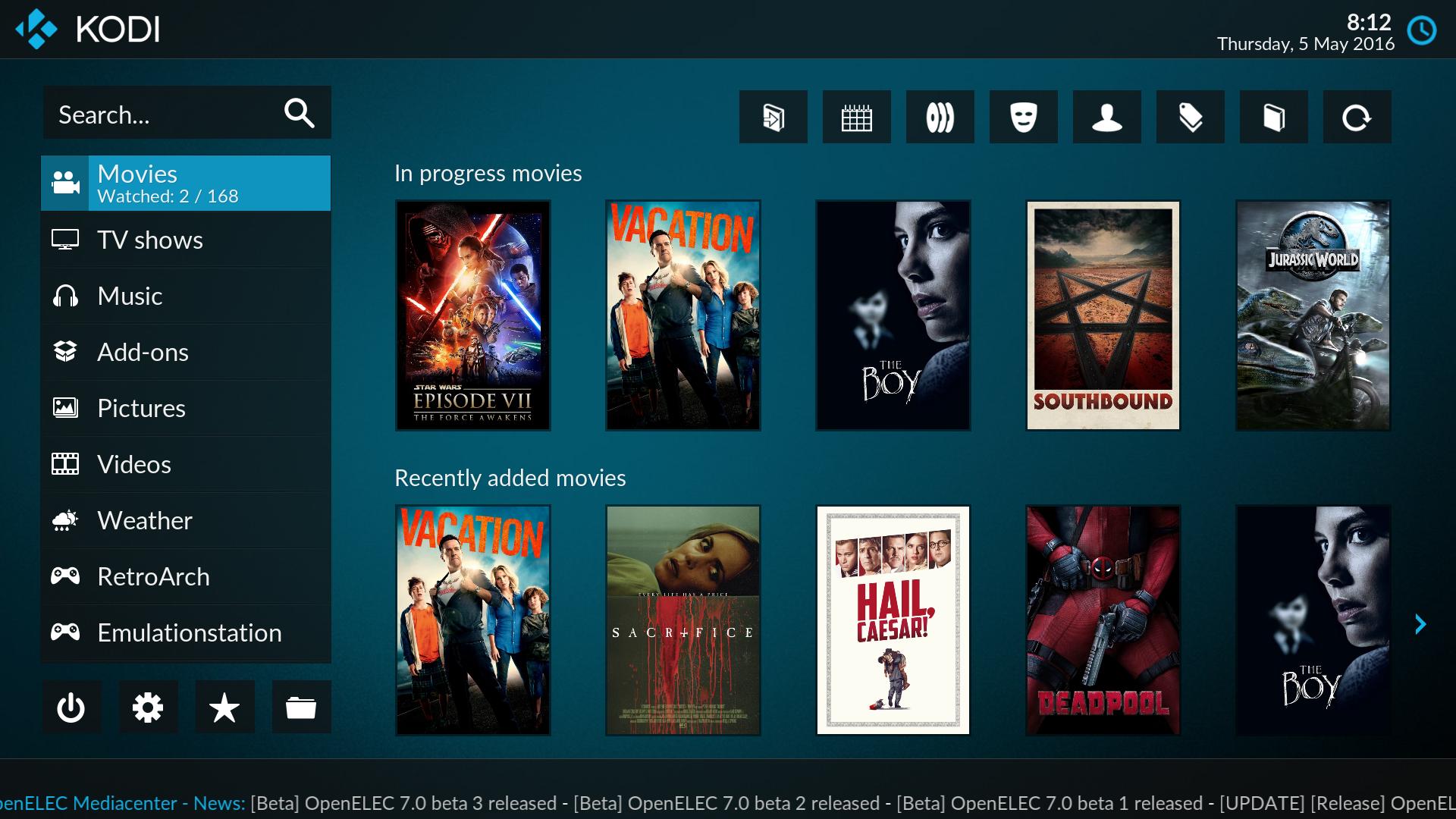Kodi Krypton Download Raspberry Pi
- I have found Kodi 17.0 (Krypton) in the Raspbian testing repository. However, when I start it, it crashes with. Segmentation fault (core dumped) Crash report available at /home/pi/kodi_crashlog-20113.log The crashlog starts like this.
- The Latest Bug Fix Release of Kodi Krypton 17.6- Final Version: Kodi 17.6: Hello Friends, in this article, we are going to see the Latest Bug Fix Release of Kodi Krypton 17.6 and all the further information about Kodi v17.6. The Official Kodi Team has informed that it is the Last version of Kodi 17 series and they also added that Kodi 18 Leia is ready to go soon.
The premier HTPC software gets an update with a new look and some new tech behind the scenes

A new Kodi release is always cause for a little celebration. It’s one of the most successful, long-running pieces of open-source media software of any type, and it powers so many other popular media centres. The latest release of Kodi has some minor improvements behind the scenes, with an overhauled video playback engine which should benefit these other media centres in the long run. However, one of the biggest things that users of stock Kodi will notice is that there’s a new default skin that replaces the venerable Confluence. Kodi 17.3 download windows 10.
Kodi (formerly XBMC) is a free and open source media player application developed by the XBMC/Kodi Foundation, a non-profit technology consortium. Kodi is available for multiple operating-systems and hardware platforms, featuring a 10-foot user interface for use with televisions and remote controls. Download kodi tv on usb.
The Raspberry Pi, Raspberry Pi 2/3. Kodi latest apk file download. As Kodi HTPC, all Raspberry Pis support full 1080p. (Currently Krypton 17.3) of Kodi are now on the default Raspbian.
Bare-bones
Kodi Krypton 17
Skins and interfaces can be changed, though, so before we delve into that let’s talk about the video playback, as it has had an update.
Long story short, it’s pretty much the same. Additions to the new video player software include video stream selection (the different angles button on your old DVD remote) and the ability to better hand off video playback tasks to add-ons. This isn’t something you’re going to notice day-to-day, but the real achievement is that the previous system was completely replaced with the new one without collapsing Kodi in the process: it being pretty much the same means they did their job. It’s a good thing.
One thing we did notice was that the video output from the HDMI worked a little better with the HDMI switcher in our setup: in earlier versions, audio from a Pi using Kodi would sometimes hiccup as if the audio stream itself just wasn’t making it to the TV. We didn’t come across this issue with Kodi 17. There’s still a little trouble playing video encoded with 10-bit colour, though, with no improvements over the previous release. That’s more of an issue with a lack of hardware decoding for 10-bit on the Pi than with Kodi though.

New look
That brings us to the new interface, Estuary. It’s almost completely different to the old Confluence, with a greater focus on using the scraped metadata from your content and optimising the space to display said content. Inspiration has definitely been taken from modern smartphone UI and UX design, which makes sense as the way we use technology has changed over the years. You can still have your basic file selection if you prefer, though, and you actually get more control over which categories are listed on the home interface. That being said, you can’t change the order in which they’re listed and, for a device you’re probably mostly using to play back video, having the pure video option last in the list is not very useful.
It runs beautifully on the Raspberry Pi, though, with smooth transitions between menus and the same basic structure as other skins. The settings menu is generally more useful and easier to navigate as well, although it does mean some extra add-on settings now live away from the settings menu in an all-encompassing add-ons field.
Future-proof
This new version of Kodi seems like a glimpse of what’s to come. With a more robust back end and a new front end to go with it, we’re probably going to start seeing a few more noticeable changes in the next version of Kodi. The new interface is great and a welcome change over the old Confluence one (although you can still install it if you prefer). Importantly, it still runs really well on a Raspberry Pi. We did most of our testing on a Raspberry Pi 2, which is more than likely the backbone for any home theatre setup, and it worked as well as ever, so there’s no worries there.
It’s definitely a worthwhile upgrade over previous versions, so if you’re an OSMC or LibreELEC user you should get in on it. Other HTPC OSes may be a little slower to integrate the new stuff, so you shouldn’t have to worry about it just yet.
Last word
Kodi Krypton Download Raspberry Pie
Kodi 17 Download Raspberry Pi
A good upgrade to an already great piece of software. It still works just fine on the Raspberry Pi, so there’s no need to overhaul your home theatre for it either.